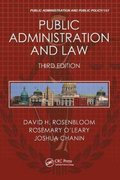Question
ECON 4531, Labor Economics Text: Labor Economics, Borjas, 8th edition 1.Suppose a worker's skill is captured by his efficiency units of labor s. The distribution
ECON 4531, Labor Economics
Text: Labor Economics, Borjas, 8th edition
1.Suppose a worker's skill is captured by his efficiency units of labor s. The distribution of efficiency units in the population is distributed such that worker 1 has one unit, worker 2 has two and so on. There are 100 workers in the population. When deciding whether or not to obtain a certain diploma, worker compares her potential wage with the diploma (wd(s)) minus the cost it takes to acquire the diploma (c(s)) to her potential wage without it. (For simplicity, assume that the diploma can be acquired instantaneously, i.e. you do not have to discount any of the above values.) The two skill-earnings relationships and the skill-cost relationship are given by
wd(s) = 100 + 0.5s
wn(s) = w + 0.5s
c(s) = 25 - 0.1s
(a) For what values of s will a worker acquire the diploma (as a function of w)? Assume that in the case of indifference, the worker does get the diploma.
(b) How should a firm, who wants to be able to differentiate between workers with at least skill level 70 and (strictly) below 70 set w? (Note, you should derive a range of values. Do not include cases of indifference.)
(c) What if the firm wants to differentiate between workers with at least skill level 90 and (strictly) below 90?
(d) Do you get higher values of w in part (b) or (c)? Why?
Step by Step Solution
There are 3 Steps involved in it
Step: 1

Get Instant Access to Expert-Tailored Solutions
See step-by-step solutions with expert insights and AI powered tools for academic success
Step: 2

Step: 3

Ace Your Homework with AI
Get the answers you need in no time with our AI-driven, step-by-step assistance
Get Started


